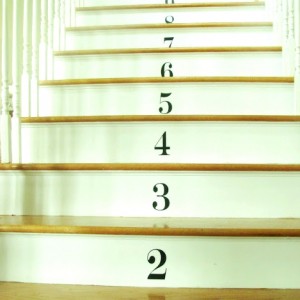Arpeggios in Minor
 Here is a warm-up exercise for six voice groups, making arpeggios in minor. The choir members together will be stacking thirds: the root, the third, the fifth, the seventh, the none and finally the eleven. To make the exercise challenging for the men’s voices as well, the chord is repeated from top to bottom.
Here is a warm-up exercise for six voice groups, making arpeggios in minor. The choir members together will be stacking thirds: the root, the third, the fifth, the seventh, the none and finally the eleven. To make the exercise challenging for the men’s voices as well, the chord is repeated from top to bottom.
You might do this exercise with just one chord. But if you really want to have an exciting exercise, you might repeat the chord on scale degrees I-IV-I:


 With my choirs I tend to do a lot of arpeggio exercises in the warming-up, lately. They are kind of hard to sing, but very good for listening and blending. Here is an example of such an exercise. The arpeggio is sung from bottom-up first and then repeated from top to bottom:
With my choirs I tend to do a lot of arpeggio exercises in the warming-up, lately. They are kind of hard to sing, but very good for listening and blending. Here is an example of such an exercise. The arpeggio is sung from bottom-up first and then repeated from top to bottom:  Here is a poppy warm-up exercise in 6/8, which can be sung in canon:
Here is a poppy warm-up exercise in 6/8, which can be sung in canon: Here are a couple of sight singing exercises with scale degrees in minor:
Here are a couple of sight singing exercises with scale degrees in minor:  In a previous post I shoed that singing from sing will be best if you relate all notes to the key of the music. You will be making less mistakes, you will be able to sing big jumps as faster, and you will be flat less.
In a previous post I shoed that singing from sing will be best if you relate all notes to the key of the music. You will be making less mistakes, you will be able to sing big jumps as faster, and you will be flat less. In a previous post we talked about solfège. Solfège is translating notes on paper to sound without help of an instrument. Going in the opposite direction is interesting as well: analysing melodies and harmonies, in other words, notating music by ear.
In a previous post we talked about solfège. Solfège is translating notes on paper to sound without help of an instrument. Going in the opposite direction is interesting as well: analysing melodies and harmonies, in other words, notating music by ear. In a previous post we talked about solfege. I argued that singing from sight can be best learned by giving numbers to the notes in the scale and relating all notes to the root.
In a previous post we talked about solfege. I argued that singing from sight can be best learned by giving numbers to the notes in the scale and relating all notes to the root. For choral members it is useful to be able to sing from sight. A lot of singers hae the skills a bit. But most of the singers get stuck when the jumps get bigger than a third.
For choral members it is useful to be able to sing from sight. A lot of singers hae the skills a bit. But most of the singers get stuck when the jumps get bigger than a third.